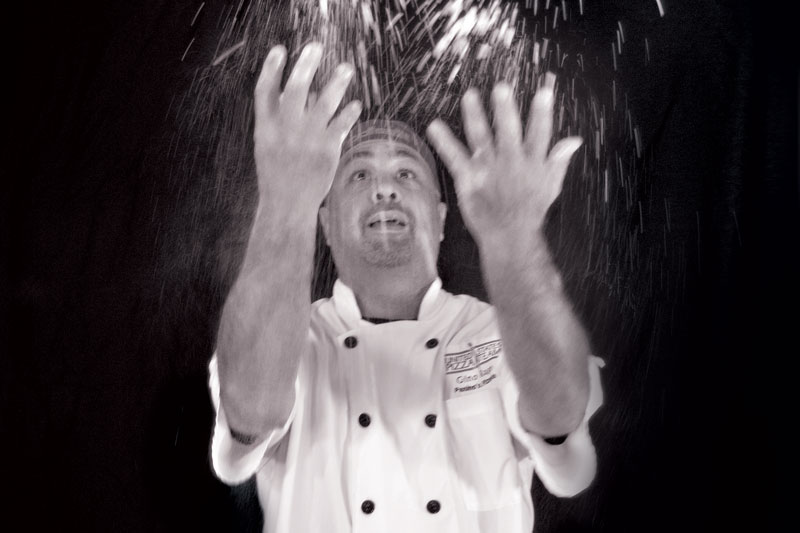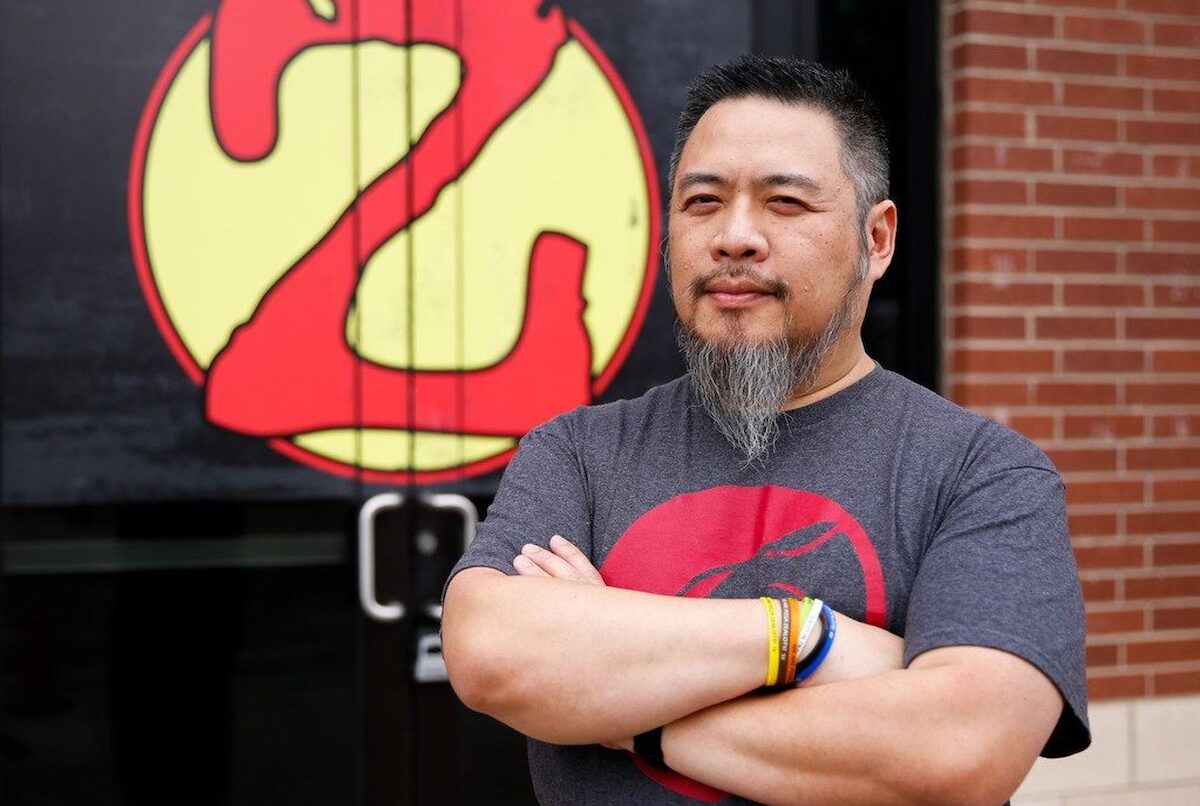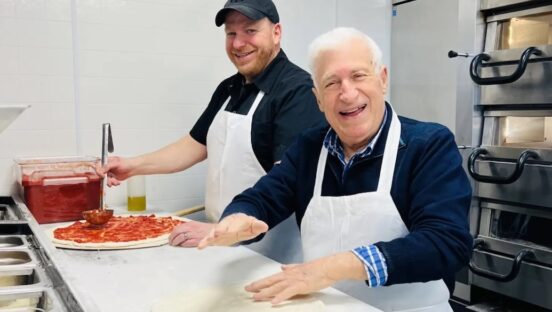For Gino Rago, the multitalented chef and passionate proprietor of Panino’s Pizza in Chicago, pizza magic starts with the dough. Not just any dough, but a mystical elixir of flour, water, salt and lievito madre, better known as Mother Yeast. A hallowed tradition in Italy for hundreds of years, Mother Yeast is the key ingredient that transforms Rago’s pizzas, artisan breads and appetizers into some of the best-loved dishes in a town where devotion to authenticity runs as deep as the deep-dish crust Chicago is famous for.
“It all started eight years ago during a family vacation to Naples,” recalls Rago, who co-owns and operates Panino’s three locations in the Chicago area and the single-unit Via Pizzeria 1-2-3 with his brother Lenny Rago and cousin Bruno Brunetti. “I was on my third trip to my favorite Neapolitan pizza place. This Italian pizzaiolo says to me, ‘Every time you come in here, you’re watching me like a hawk, so I know you run a restaurant. I’m going to give you a very special gift.’”
This gift—a sample of Mother Yeast from the Italian’s personal culture—had kept on giving for about 200 years before Rago took possession of it. Enchanted, Rago took it home and set out to better understand it. “He told me how to bring it back to life,” he says. “Later, through my research in PMQ Pizza Magazine and with the help of my friend, Tom Lehmann, I learned how to store the Mother Yeast in my garage—in a Styrofoam box rigged with a light bulb, dimmer switch and a peephole.”
Soon, Rago was acting as wet nurse to this yeast beast, regularly feeding it warm water and sugar. “I fed it every day, and one morning I was astounded to find it had activated,” he recounts. “It was spilling over the box like a volcano, and that’s when I started making the pizza crust that today supports a $6-million-annual business.”
Thanks in part to the Mother Yeast, Rago has earned fame as a pizza making wizard in the Windy City. A living organism that must be fed and nurtured to survive, this fungal gold continues to conjure up a little bit of Italy as the sourdough starter for some of the most deliciously airy, slightly tart pizza dough that’s ever crossed the Atlantic. And Rago has never forgotten the generous Italian pizzaiolo who first shared its secrets with him. “He’s my paisan,” he says, fondly.
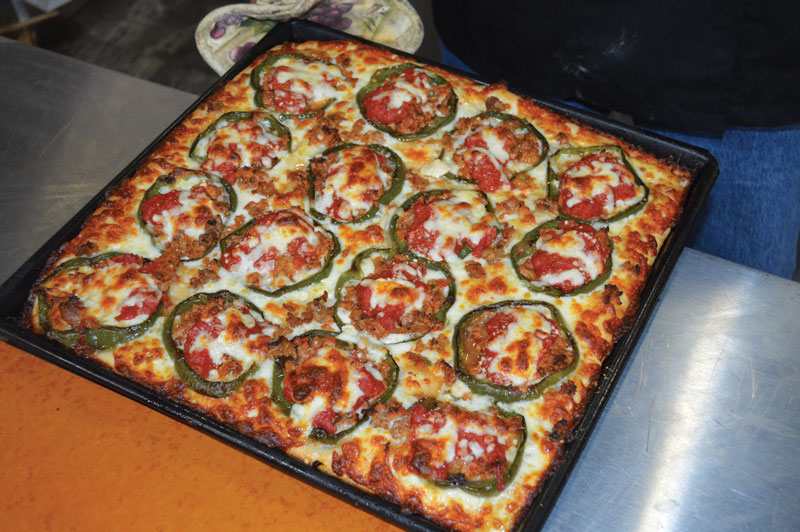 |
|
Panino’s famous Grandma Pie honors Rago’s proud Italian heritage and family roots. It’s a traditional pan pizza with green peppers and a homemade sausage blend. Rago recently prepared it as an award-winning entry at the Groupon U.S. Pizza Team Trial competition in Cleveland. |
From Chicago to Italy and Back
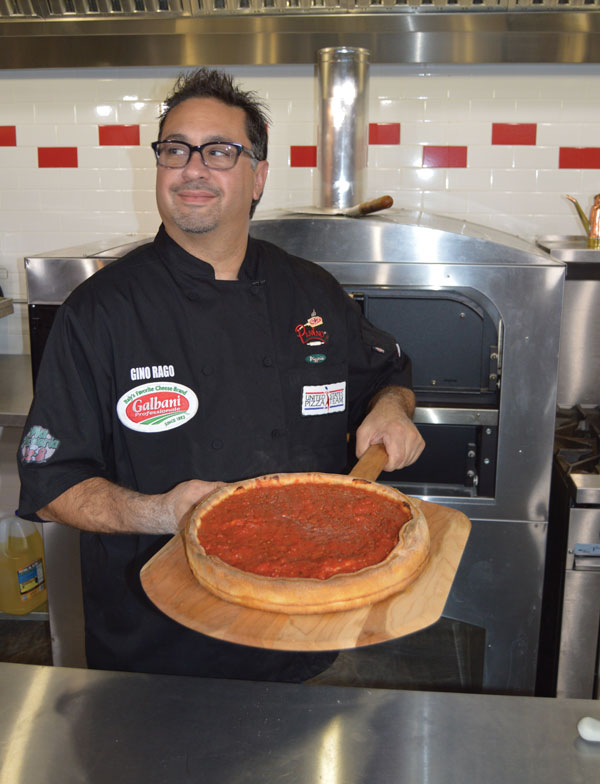 |
|
Chicago-style deep dish is just one style featured on Panino’s menu, along with Grandma style and East Coast thin crust pies. |
Italians have often passed cultures of Mother Yeast down to family members, friends and other loved ones. The Boudin Bakery in San Francisco reportedly uses a Mother Yeast starter first developed during the California gold rush in the mid-1800s. With its evocative name, which conjures images of ancient goddesses and fertility cults, Mother Yeast is seen by many as the key to soft, extremely tasty dough, and customers at Panino’s would likely agree. Rago, a dedicated chef who has mastered a variety of cuisines, serves several pizza styles at his shops, including Chicago Deep Dish, East Coast Thin Crust, Neapolitan and Grandma styles—along with a large menu of appetizers, pasta, traditional Italian specialties, artisan breads and desserts. “I believe we’re the only pizzerias in Chicago offering all of these diverse pizza varieties under one roof,” Rago says. But many think the Neapolitan style is the highlight of Panino’s menu. In fact, Chicago food journalist and TV host Steve Dolinsky declared Panino’s the best Neapolitan pizzeria in the city.
Rago, a Groupon U.S. Pizza Team member, admits that the size of his menu—which also features baby back ribs and pot roast—and his time-consuming old-school methods challenge his employees, but he believes they feed off his family’s commitment to excellence. “We have a great bunch of guys who share our passion for artisanal creativity,” he says. “They’re proud that we make our own Italian fennel- and pepperoni-flavored sausage and hand-make our Altamura-style breads. We use our leftover Mother Yeast pizza dough to bake bread and serve as the foundation for our Burrata Boat and Gino Roll appetizers and the bread bowls for our soups.”
Rago’s own experiences in Italy began when he was still an infant. He was born in Chicago but moved to Italy with his parents at six months old. As a kindergartner, he modeled an oversized, bowtie-blaring blue suit—a snapshot that invites friendly ribbing for the self-confident, leather jacket-sporting pizza don he is today. After kindergarten, he and his family moved back to Chicagoland, but the family returned to Italy each summer until Rago was 12. Love for Italian cuisine and respect for hard, honest labor were already circulating in the wide-eyed boy’s bloodstream. When Gino and Lenny were teenagers, their dad, who worked in the food distribution business, routinely dropped the eager entrepreneurs-in-training off to work at local restaurants. In these hectic kitchens, the youths soaked in pizza knowledge from the sauce-stained ground up. “I love pizza; I dream about pizza,” Gino says without a trace of irony. After high school, he cross-circuited briefly into electronics trade school, but, he adds with a shrug, “It didn’t connect.”
A Pizza Family
In August 1999, Gino and Lenny put down stakes on their shared dream of opening an Italian restaurant with the authentic dishes that first captured their imaginations as boys in the Old Country. They launched Panino’s in Evanston, Illinois, home of Northwestern University. In 2006, they expanded their culinary territory by partnering with Brunetti and opening a new Chicago location. Today, the pizza family operates three sites in the Chicago area. “We’re all different—my brother is the business guy who handles daily financial operations, while Bruno is in charge of employees,” Gino explains. “I’m the menu guy who’s always coming up with new items and perfecting our recipes. I love being creative with food, and I’m sure I learned it watching my grandmother and mother make magic in their kitchens and visiting Italy so often. The smells from my grandfather’s farm and the Sorrento fish markets still play in my dreams.”
Rago’s wife, Tina, toiled at Panino’s in the early days but now works for a doctor’s group, while their two daughters pursue careers outside the pizza universe. But Rago can’t imagine doing anything else—he even brings his work home with him each day to the Chicago suburbs. In fact, he parks it in the garage. That’s where he keeps the brick pizza oven he built himself. It serves as the focal point for parties, football watching and, most importantly, pizza experimentation. “Tina said I was making too big of a mess in the kitchen coming up with new recipes,” he says. “Playing with my pizza oven in the garage, trying new flavor combinations—this is where I like to hang out on my off days. And I love to invite my buddies over to taste my research.”
The Rise in Minimum Wage
Passione and fantasia are two words that Rago pronounces fluently in melodic Italian and understands in his gut. And he’s willing to pay many of his employees, some of whom have worked for him as long as 18 years, a higher wage because they embrace those same ideals. “I believe we’re successful because Panino’s operates like a big family,” he says. “We all have each other’s back, and that’s why our people stay.”
But as the minimum wage rises in Chicago—it’s now at $10 an hour and will rise incrementally to $13 an hour by 2019—Rago knows his business will feel the effects. “People in the food industry have to pay bills, too, so I think it’s fine that good bartenders, servers and cooks receive more than the minimum wage,” he says. “But is it right that a kid right out of high school makes $15 an hour answering phone calls? I’m against that.”
Rago is already planning to raise his prices to cover soaring labor costs. “As a restaurant owner, my challenge is to build gradual price increases into our operation so customers aren’t scared off by menu items going from $10 to $13 overnight,” he says.
The Thrill of Victory
This pizzaiolo-on-the-go has another family he cherishes: his teammates on the Groupon U.S. Pizza Team. Rago competed at the World Pizza Championship in Parma, Italy, in 2014, but illness grounded him from the 2015 event. That didn’t stop his teammates from sending him a get-well video message from the steps of a Roman ampitheatre in Verona. “Competing on the team is a fun time and a serious time,” he says. “It’s fun to be together with some of the best pizza chefs in the country, traveling together, shopping together for ingredients and comparing techniques on pizza making. It gets serious quickly when you hit the arena and you’re suddenly on stage with competitors from 30 other countries as you represent the U.S.”
Rago has numerous culinary competition wins and best-of-Chicago titles under his belt. His latest victory: the Competitor’s Choice Award for his Grandma’s Stuffed Green Pepper and Sausage Pie at the Groupon USPT Trials event, held October 26 in Cleveland. But world titles have proven elusive for the Americans, despite numerous trips to Italy. “The answer to better results with Italian judges in Parma is greater simplicity,” he says. “The judges are looking for thinner, rustic-looking pizza with fewer toppings, classic sauces and cheeses that aren’t so strong. Competitors should pretend they’re going to a pizzeria in Naples when they plan their entries.”
Back home, meanwhile, Rago hopes to keep his own winning streak alive with branded products for home-based pizza makers. The product line includes Via Pizzeria 1-2-3 Neapolitan-Style Pizza Sauce, Focaccia Dough Mix and Neapolitan-Style Crust Mix. “My initial motivation wasn’t to make millions; it was to help all the customers who came in and asked to buy dough balls for their wood-burning ovens in the backyard,” he says. “We finally thought, instead of selling dough, why don’t we package the ingredients in one bag? Customers just add water and a little olive oil, and they can enjoy artisan bread and Neapolitan crust with the convenience of making it at home. Since then, we’ve moved on to sauces, and we hope to market a frozen pizza crust in the future.”
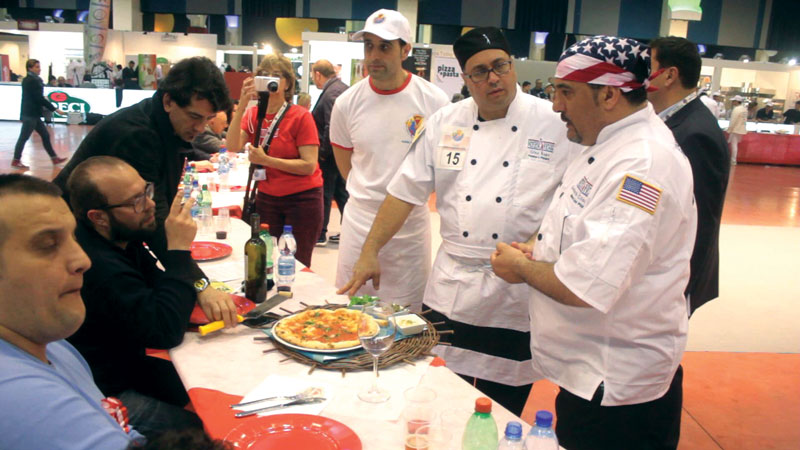 |
|
Rago consults with his Groupon U.S. Pizza Team colleague and Italian paisan Lenny Giordano at the World Pizza Championship in Parma, Italy. Giordano is owner of Mona Lisa Pizza in Staten Island, New York. |
Old-School Flavors
While Rago focuses on perfecting menu quality, he’s well aware that a strong online presence is vital for continued growth. “Young people want to be able to use their smartphones, and that’s why our top priority is delivery and takeout,” he says. “We’re very active on our website, with sports- related coupons and online discounts for our college student customers.”
Every Panino’s store offers online ordering and a fairly extensive catering menu. Overall sales for the stores are rising 5% percent annually, Rago says. About 50% of those sales come from delivery, followed by 25% from carryout, 15% from dine-in and 10% from catering. “My food costs and labor costs both run about 35% because I’m willing to pay a little more for great ingredients and great employees,” he adds.
Rago insists that his family’s restaurants offer something the pizza chain giants can’t duplicate. Again, the conversation circles back to passione and fantasia. “What we’re doing, Domino’s can never do,” he says, simply. “They’re too big. It takes three days to make our sausage in-house. When someone wants extra-authentic old-school flavors, they have to go to a mom-and-pop pizzeria. That’s where the passion is.”
And pizza makers don’t get any more authentic—or passionate—than Rago. He is commitment in motion, and his dedication shows in every deep-dish or East-Coast-style pizza he makes, every new product he launches, every competition he enters, and every smile he shares with his close-knit families at home and at work. It’s part science and part magic—just like his Mother Yeast. It’s the life he was born to live.



